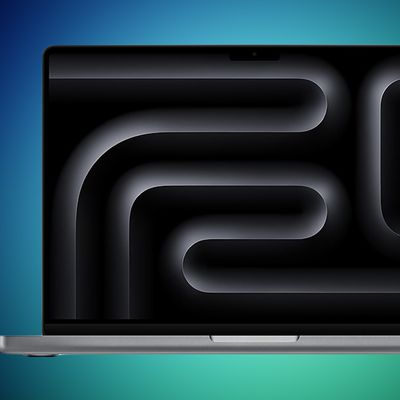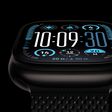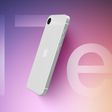Video: Testing OWC's Thunderbolt 4 Dock With Built-In Power Supply
Back in January, well-known Mac accessory company OWC introduced the Thunderbolt Go Dock, which it says is the first full-featured Thunderbolt dock equipped with a convenient built-in power supply. We were able to get our hands on one of the new docks, and thought we'd test it out for those who are interested.
If you've used a Thunderbolt 4 dock, you know that most of them require a separate power supply to operate peripheral devices and provide passthrough charging. They're often much more inconvenient than a bus-powered dock because of the bulk and the extra cable component.
The OWC Thunderbolt Go Dock's power supply is included in the dock enclosure, so it's an all-in-one device that does not require you to have an extra power brick. That functionality is useful at home, but also on the go if you need to work while traveling or away from your house. Note that you still need a power cable as the dock has to be plugged in, but it uses a single cord that plugs directly into the dock rather than into a separate power brick.
There are a total of 11 ports, including three Thunderbolt 4 ports, one USB-C ports, three USB-A ports, an HDMI port, an Ethernet port (2.5 Gbps), an SD card reader, and an audio jack. The dock offers 90W of pass-through charging, so it's suitable for all of Apple's MacBooks. The only downside is the price, which is $349.
That's not too outrageous for a Thunderbolt 4 dock given the built-in power supply and the number of ports, but there are cheaper Thunderbolt 4 options out there for those who don't need this functionality, and it is not as full-featured as some competing docks at a similar price. This particular dock is best for those who need something that's convenient for use in multiple locations given its portability.
What do you think of the Thunderbolt Go Dock? Let us know in the comments below.
Popular Stories
Apple will launch its new iPhone 17 series in two months, and the iPhone 17 Pro models are expected to get a new design for the rear casing and the camera area. But more significant changes to the lineup are not expected until next year, when the iPhone 18 models arrive.
If you're thinking of trading in your iPhone for this year's latest, consider the following features rumored to be coming...
In select U.S. states, residents can add their driver's license or state ID to the Wallet app on the iPhone and Apple Watch, providing a convenient and contactless way to display proof of identity or age at select airports and businesses, and in select apps.
Unfortunately, this feature continues to roll out very slowly since it was announced in 2021, with only nine U.S. states, Puerto Rico,...
Apple does not plan to refresh any Macs with updated M5 chips in 2025, according to Bloomberg's Mark Gurman. Updated MacBook Air and MacBook Pro models are now planned for the first half of 2026.
Gurman previously said that Apple would debut the M5 MacBook Pro models in late 2025, but his newest report suggests that Apple is "considering" pushing them back to 2026. Apple is now said to be...
Three out of four iPhone 17 models will feature more RAM than the equivalent iPhone 16 models, according to a new leak that aligns with previous rumors.
The all-new iPhone 17 Air, the iPhone 17 Pro, and the iPhone 17 Pro Max will each be equipped with 12GB of RAM, according to Fixed Focus Digital, an account with more than two million followers on Chinese social media platform Weibo. The...
Since the iPhone X in 2017, all of Apple's highest-end iPhone models have featured either stainless steel or titanium frames, but it has now been rumored that this design decision will be coming to an end with the iPhone 17 Pro models later this year.
In a post on Chinese social media platform Weibo today, the account Instant Digital said that the iPhone 17 Pro models will have an aluminum...
Production of foldable OLED displays for Apple's first foldable iPhone have begun ahead of its expected launch next year, Korea's ETNews reports.
The first foldable iPhone's displays are being produced by Samsung Display, who are establishing a production line dedicated to the upcoming Apple device its A3 factory in Asan, Chungcheongnam-do. The production line will make displays exclusively...
Apple is expanding the ability to add an Apple Account Card to the Wallet app to more countries, according to backend Apple Pay changes.
With iOS 15.5, Apple updated the Wallet app to allow users to add an Apple Account Card, which displays the Apple credit balance associated with an Apple ID.
If you receive an Apple gift card, for example, it is added to an Apple Account that is also...
Apple is continuing to refine and update iOS 26, and beta three features smaller changes than we saw in beta 2, plus further tweaks to the Liquid Glass design. Apple is gearing up for the next phase of beta testing, and the company has promised that a public beta is set to come out in July.
Transparency
In some apps like Apple Music, Podcasts, and the App Store, Apple has toned down the...


















